The purpose of the tire pressure monitoring system (TPMS) in your vehicle is to warn you that at least one or more tires are significantly under-inflated, possibly creating unsafe driving conditions. The TPMS low tire pressure indicator is a yellow symbol that illuminates on the dashboard instrument panel in the shape of a tire cross-section (that resembles a horseshoe) with an exclamation point.
That indicator light in your vehicle has a history. It’s a history rooted in years of uncertainty about proper tire pressure and many serious car accidents that might have been avoided had drivers known their air pressure was low. Even now, it’s estimated that a substantial number of vehicles hit the road each day with underinflated tires. However, proper tire maintenance with the aid of a TPMS can and does help prevent many serious accidents.
Before this indicator light became commonplace, knowing whether your air pressure had reached unsafe levels meant getting out, crouching down, and using a tire gauge. With few exceptions, this was the only pressure-checking tool ordinary consumers had at their disposal.
Then, in response to a surge in accidents due to underinflated tires, the US government passed the Transportation Recall Enhancement, Accountability, and Documentation (TREAD) Act. One of the outcomes of this legislation is that most vehicles sold in the United States since 2007 include a tire pressure monitoring system of some kind.
Not every TPMS works the same way. The illumination of the low tire pressure indicator represents the final step in the process of either an indirect TPMS or a direct TPMS.
An indirect TPMS typically relies on wheel speed sensors that the anti-lock brake system uses. These sensors measure the rate of revolution each wheel is making and can be used by on-board computer systems to compare with each other and to other vehicle operation data such as speed.
Based on the rate of revolution of each wheel, the computer can interpret the relative size of the tires on your vehicle.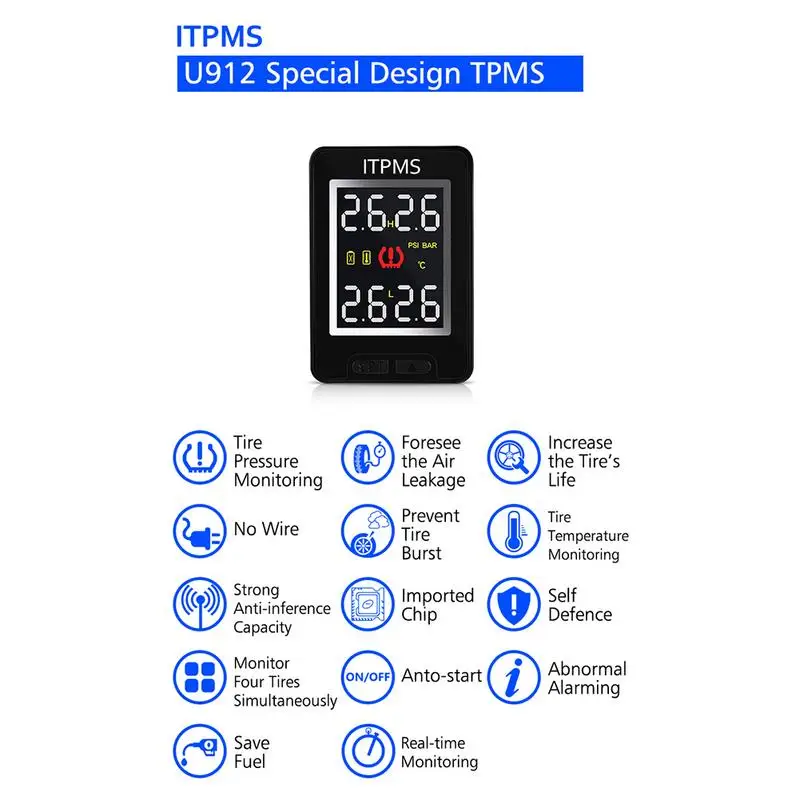 When a wheel starts spinning faster than expected, the computer calculates that the tire is underinflated and alert the driver accordingly.
When a wheel starts spinning faster than expected, the computer calculates that the tire is underinflated and alert the driver accordingly.
So, an indirect tire pressure monitoring system doesn’t actually measure tire pressure. It’s not electronically processing the same kind of measurement you might see with a tire gauge. Instead, an indirect tire pressure monitor simply measures how fast your tires are rotating and sends signals to the computer that will actuate the indicator light when something in the rotation seems amiss.
-- Relatively inexpensive compared to a direct TPMS
-- Requires less programming/maintenance over the years than a direct TPMS
-- Less overall installation maintenance than its direct counterpart
-- May become inaccurate if you purchase a bigger or smaller tire
-- May be unreliable when tires are unevenly worn
-- Must be reset after properly inflating every tire
-- Must be reset after routine tire rotation
Direct TPMS uses pressure monitoring sensors within each tire that monitor specific pressure levels – not just wheel revolution data from the anti-lock brake system.
Sensors in a direct TPMS may even provide tire temperature readings. The direct tire pressure monitoring system sends all of this data to a centralized control module where it’s analyzed, interpreted, and, if tire pressure is lower than it should be, transmitted directly to your dashboard where the indicator light illuminates. A direct tire pressure monitor usually sends all of this data wirelessly. Each sensor has a unique serial number. This is how the system not only distinguishes between itself and systems on other vehicles, but also among pressure readings for each individual tire.
Many manufacturers use proprietary technology for these highly specialized systems, so replacing a TPMS in a way that’s consistent and compatible with your vehicle will require an experienced, knowledgeable technician.
-- Deliver actual tire pressure readings from inside the tire
-- Not prone to inaccuracies because of tire rotations or tire replacements
-- Simple resynchronization after tire rotation or tire replacements
-- Batteries inside the sensors usually last for about a decade.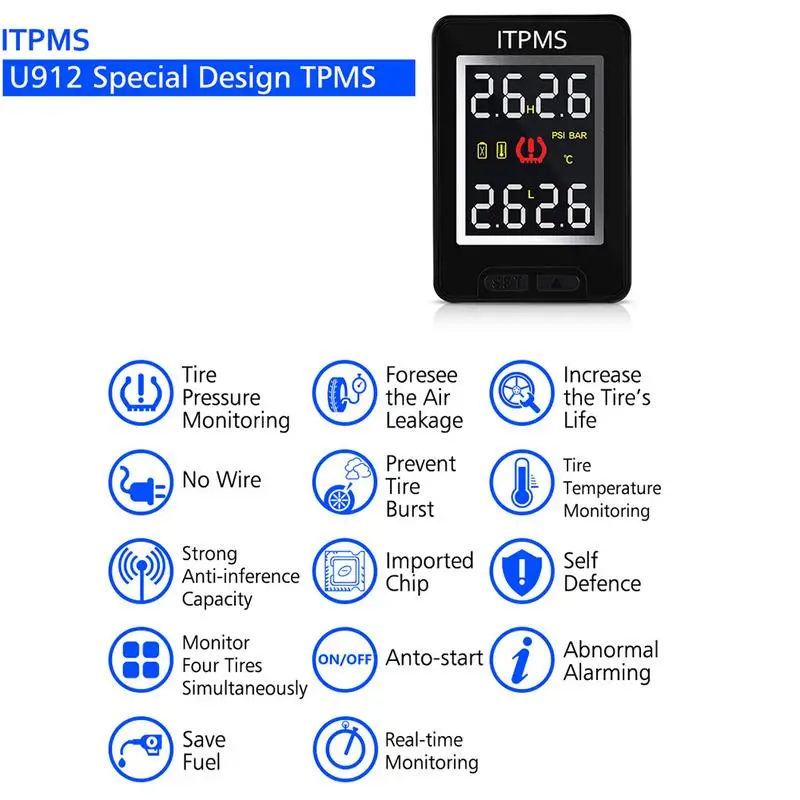
-- May be included in a vehicle’s spare tire
-- More expensive overall than an indirect TPMS
-- Though simple, resynchronization may require costly tools.
-- Battery rarely serviceable; if the battery is drained, the whole sensor must be changed.
-- Proprietary systems make installation, service, and replacement confusing for consumers and auto shops.
-- Sensors are susceptible to damage during mounting/demounting
Although the methods may be different, both systems serve the same purpose and activate the same indicator light. Even though a TPMS can deliver accurate alerts when properly maintained, it’s not a replacement for manual air pressure checks, consider it just another item in your car maintenance toolbox.
There’s never a good time for a flat. That’s why Bridgestone DriveGuard tires are masterfully engineered to keep you moving for up to 50 miles at speeds up to 50 MPH without disruption.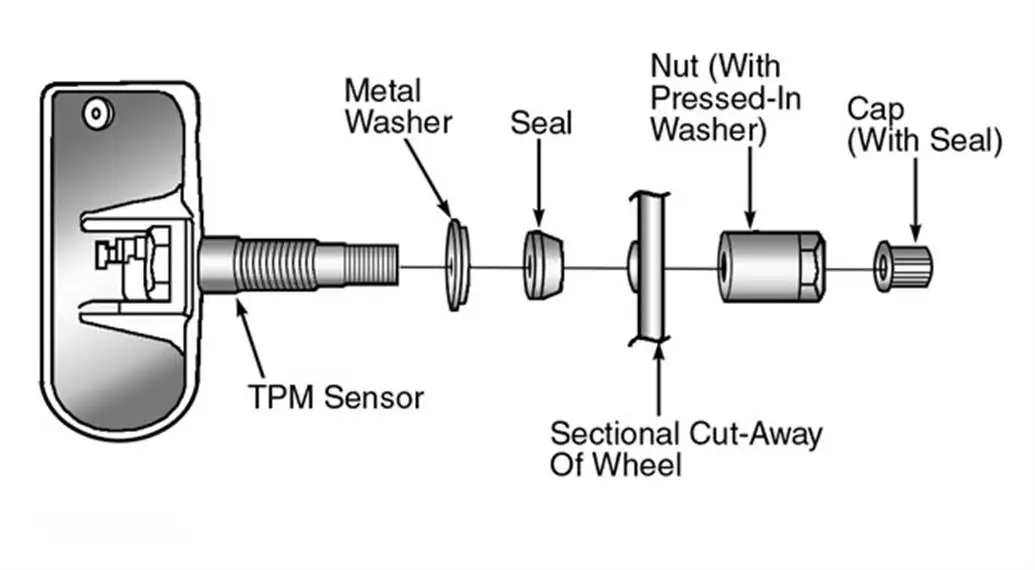
There’s never a good time for a flat. That’s why Bridgestone DriveGuard tires are masterfully engineered to keep you moving for up to 50 miles at speeds up to 50 MPH without disruption.
See Details Find Your Fit
A tire-pressure sensor is a small programmable electronic device, located in the pressurized pocket made by a wheel and tire, that constantly measures the air pressure inside the tire. The sensor transmits that information via low-frequency radio to the vehicle's onboard computer and, if the car has one, to a corresponding display in the instrument cluster. It reads out in pounds per square inch (psi), and it illuminates an amber warning light to alert you if one or more tires are low on air.
Tire-pressure sensors are integral to what is known as the Tire Pressure Monitoring System (TPMS).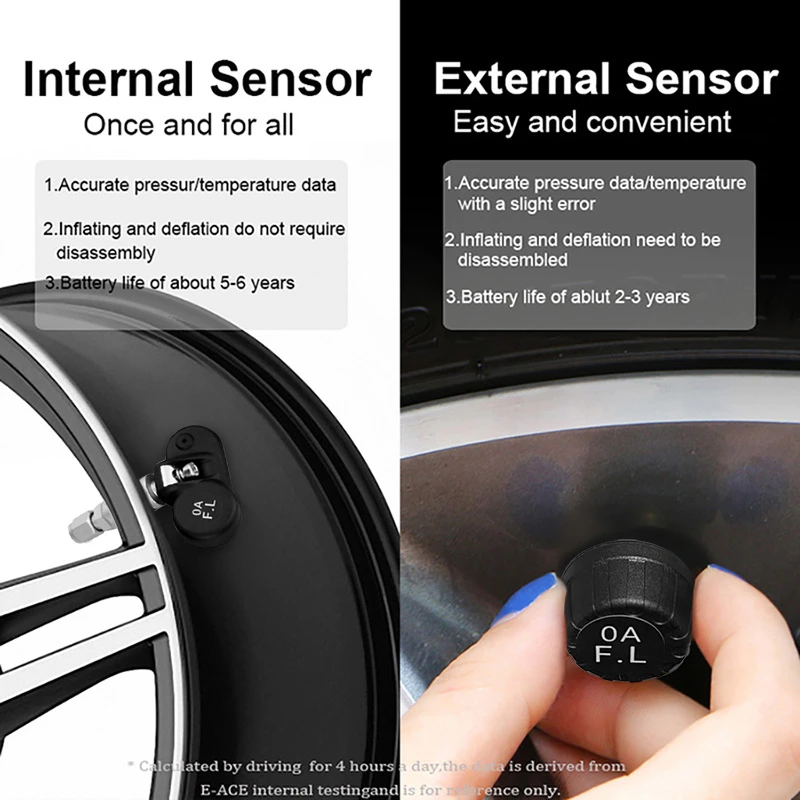 Millions of these systems have been fitted to passenger vehicles since the 2008 model year, when they were made mandatory in the United States. Tire-pressure sensors are usually attached to the valve-stem assembly of each tire and are powered by batteries.
Millions of these systems have been fitted to passenger vehicles since the 2008 model year, when they were made mandatory in the United States. Tire-pressure sensors are usually attached to the valve-stem assembly of each tire and are powered by batteries.
In the event that the sensor detects that air pressure in a tire has dropped to a dangerously low level—25 percent below the recommended air pressure, according to federal government regulations—a warning message or light will display in the instrument cluster. Inflation pressure recommendations for the tires that originally come on a car can usually be found on a label on the driver's doorsill.
$15 at Amazon
TPMS sensors are powered by batteries designed to last several years, but they do eventually lose their charge.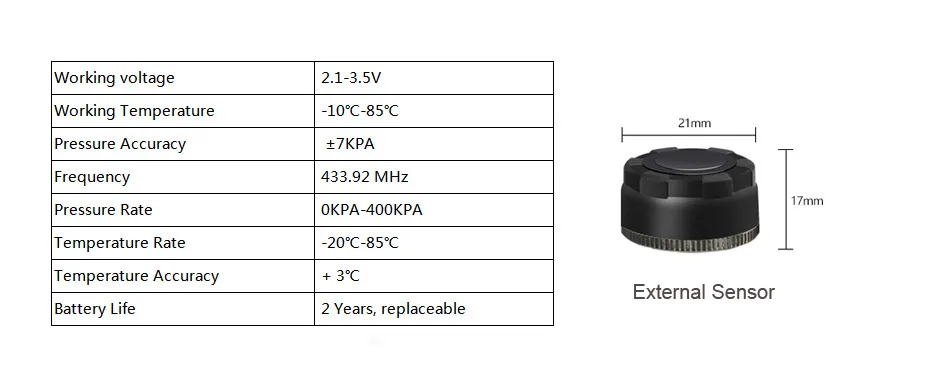 Because the sensors cannot easily be removed, when their battery dies the entire sensor must be replaced.
Because the sensors cannot easily be removed, when their battery dies the entire sensor must be replaced.
Replacement tire sensors vary in price depending on your vehicle and can be found from many sources, from Amazon to Advance Auto Parts to Tire Rack—or at your local tire store. Expect to pay at least $100 for a set of four, and they need to be replaced at a repair facility or tire store. You can continue to drive indefinitely with a failed TPMS sensor in one or more of the wheels, but then the system will never be able to warn you if you've picked up a puncture in those tires and are on the verge of a blowout.
This is what a blowout looks like. It can happen in an instant when your tires are dangerously low, and it can cause you to lose control of your car.
Getty ImagesThere is a second type of tire-pressure monitoring system, which works entirely differently. It does not employ tire-pressure sensors in the tires, relying instead on the anti-lock-braking system's wheel-speed sensors to determine if any particular tire's rotational speed is out of sync with the others.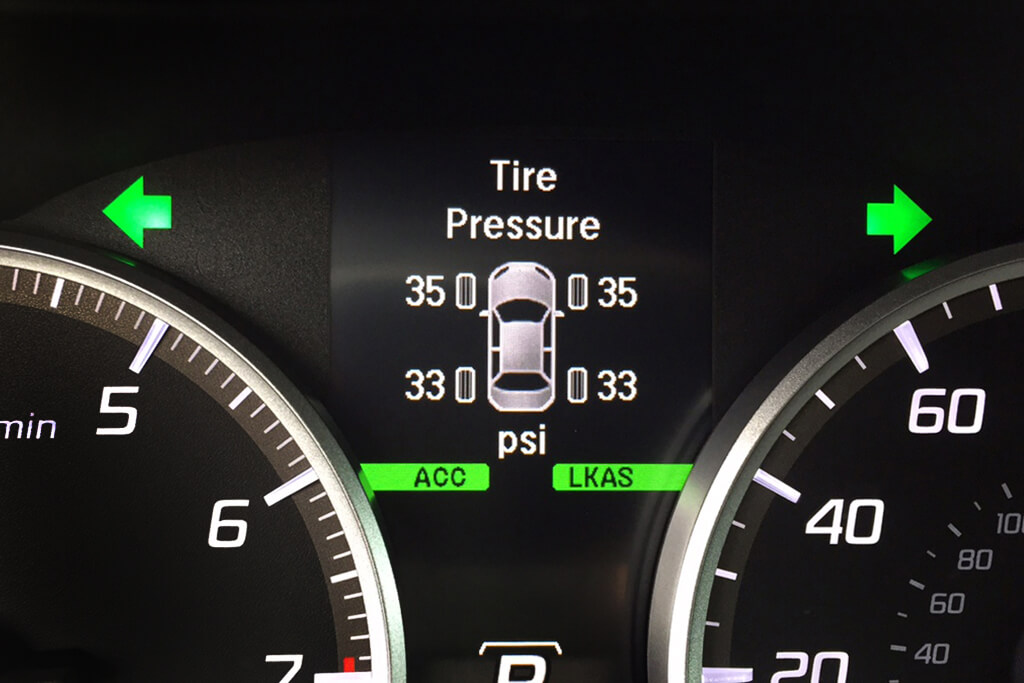 This indicates that the suspect tire's circumference has changed and that it could have lost air pressure.
This indicates that the suspect tire's circumference has changed and that it could have lost air pressure.
To ensure that your vehicle's TPMS system's pressure sensors remain operational for as long as possible, always reaffix the valve-stem cap after checking air pressure or inflating the tires. This helps prevent valve-stem corrosion, particularly where salt is used to clear the roads in the winter.
If the TPMS warning light does illuminate—the light looks like a flat tire as viewed from behind the car—check your instrument cluster display and then use a tire-pressure gauge to check all four tires to determine which ones, if any, are low. Fill them to the manufacturer's recommendation as soon as possible, remembering that, if you've driven several miles to get to an air hose, your tires will have warmed up and you should inflate them evenly.
For example, if when you get to the gas station one tire is at 20 psi and the other three are at 34, bring the low tire up to the other three, as long they are at or above the vehicle manufacturer's recommended pressure.
However, if the TPMS warning comes on again after a short period of time—hours or days—you most likely have a leak in one of your tires. Get to a tire store and have it repaired without delay. Driving on a badly underinflated tire can destroy it; worse yet, it can cause you to lose control of your car and have an accident.
Finally, for drivers who keep a set of winter tires mounted on a second set of wheels for use in the snowy months, we recommend having compatible TPMS sensors installed on the second set of tires, too. That way, you're covered no matter the season or which tires you have on at the time. After all, we wouldn't want you to feel, ahem, deflated by getting a flat.
Many kinds of tire pressure gauges are available today that vary in size, shape and price. Here's a selection to choose from.
$26 at eBay
This is the gauge that we gauge good enough to use in the Car and Driver test garage. We set all of our test vehicles' tire pressures precisely to ensure that they perform their best in our comprehensive testing program. This low-cost Accutire digital gauge works beautifully. It reads in half-pound increments, so you can set your tires' pressures as accurately as we do.
We set all of our test vehicles' tire pressures precisely to ensure that they perform their best in our comprehensive testing program. This low-cost Accutire digital gauge works beautifully. It reads in half-pound increments, so you can set your tires' pressures as accurately as we do.
Now 36% Off
$10 at Amazon
This analog gauge is to modern digital gauges what a typewriter is to a laptop computer. While it's ancient technology, it's still far better than nothing, and it will help you to keep your tires in the correct inflation range—and do it for a rock-bottom price. But we recommend (and use) the Accutire gauge, so that should tell you where we stand.
$23 at Amazon
We have experience with Joes digital pressure gauges, so we trust this analog unit to be highly accurate as well. Joes supplies teams in many racing series, and racers require precise tire pressures to get the best performance out of their racing machines. One of these will serve you well.
One of these will serve you well.
$49 at Amazon
Like Joes, Longacre sells to racers, and some of its most precise digital pro gauges cost hundreds of dollars. Even this lower-cost digital gauge has some advantages over analog units: It's easier to read and displays pressure in 0.2-psi increments, plus Longacre claims it's accurate to 0.8 percent. That should be more than enough for just about anyone.
Now 18% Off
$27 at Amazon
It's one thing to just read tire pressure—having the ability to add air is a helpful bonus. This top-rated inflator from Amazon reads pressures from 0 to 250 psi and has a claimed accuracy within 1 percent. The LED screen is powered by two included AAA batteries. To add air, you'll just need an air compressor.
Now 33% Off
$17 at Amazon
If you plan to measure tire pressures for heavy-duty vehicles, such as trucks and RVs, this is the gauge to buy. Equipped with a flashlight, a crisp LED display, and a dual head to check inner and outer valve stems, this gauge is a great product to stow in your glovebox. And with a readable range from 0 to 230 psi, it'll work for just about anything.
Equipped with a flashlight, a crisp LED display, and a dual head to check inner and outer valve stems, this gauge is a great product to stow in your glovebox. And with a readable range from 0 to 230 psi, it'll work for just about anything.
$300 at summitracing.com
The folks at Intercomp know how important tire pressure is, as they specialize in accurate gauges for industrial and performance applications. This one is the cream of the crop, with a quick digital gauge and a claimed accuracy within 0.1 percent. With a thumb-operated dual bleeder and a 22-inch hose, this tool will get your car back on the track safely and promptly.
Car and driverCar and driver Lettermark logoSteve Siler
Steve Siler started a car column at his college newspaper in 1995 and has been writing about cars ever since, with his musings and photographs having appeared in scores of different print and online publications. Born in Los Angeles, California, where he still lives and works when he's not on a media drive program or covering a car show, Siler brings a West Coast perspective to his coverage and has been a contributor to Car and Driver since 2006.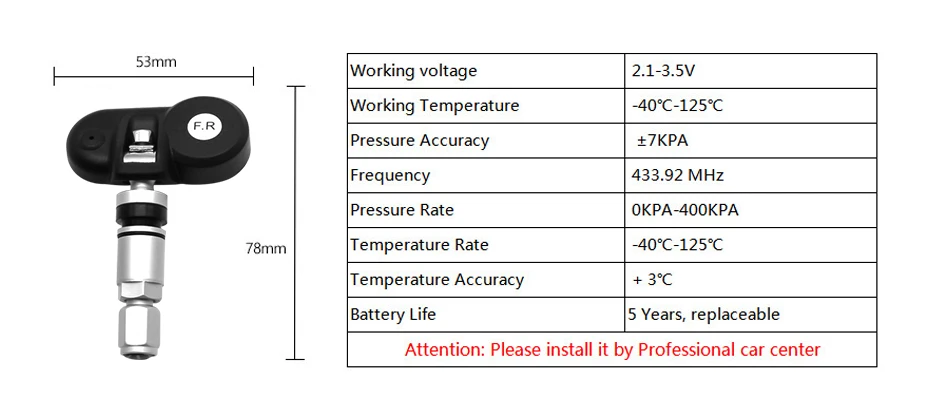
1. How does the INCAR TPMS system work?
Tire pressure monitoring systems continuously monitor tire pressure using sensors located either inside or outside the tire. The information collected by the sensors is transmitted wirelessly to the on-board display, which displays real-time tire data and alerts the driver when tire pressure or temperature is outside a predetermined level.
2. Why do I need a tire pressure monitoring system?
Both low and high tire pressure lead to excessive fuel consumption and increased tread wear. INCAR TPMS saves you money and ensures safety by preventing wheel explosions, especially on the highway.
3. Does INCAR TPMS have a warranty?
Yes, the INCAR TPMS pressure and temperature monitoring system comes with a standard 12-month warranty on defective parts - except for replacement batteries, which can run out faster under heavy use in freezing temperatures. Batteries are not covered by the warranty in any case, but they are fully functional at the time of delivery.
Batteries are not covered by the warranty in any case, but they are fully functional at the time of delivery.
4. Does INCAR TPMS measure pressure and temperature?
Yes, unlike some other systems that simply measure pressure, the INCAR TPMS also measures the internal air temperature in each tire and alerts you when the temperature rises significantly. This can be an advantage on vehicles that are idle for long periods where the brake caliper can stick after the first application and cause the wheel to seize. Also, the temperature value affects the calculation of critical pressure and the decision to signal danger, especially in winter.
5. How accurate is INCAR TPMS?
Our sensors are very accurate - each goes through a certified laboratory, including for electromagnetic immunity. Tire pressure is measured with an accuracy of +/-0.1 atm., temperature +/-3°C. Pressure and temperature can vary greatly from wheel to wheel depending on many factors such as sunlight on one side, vehicle load, camber/toe, brake force.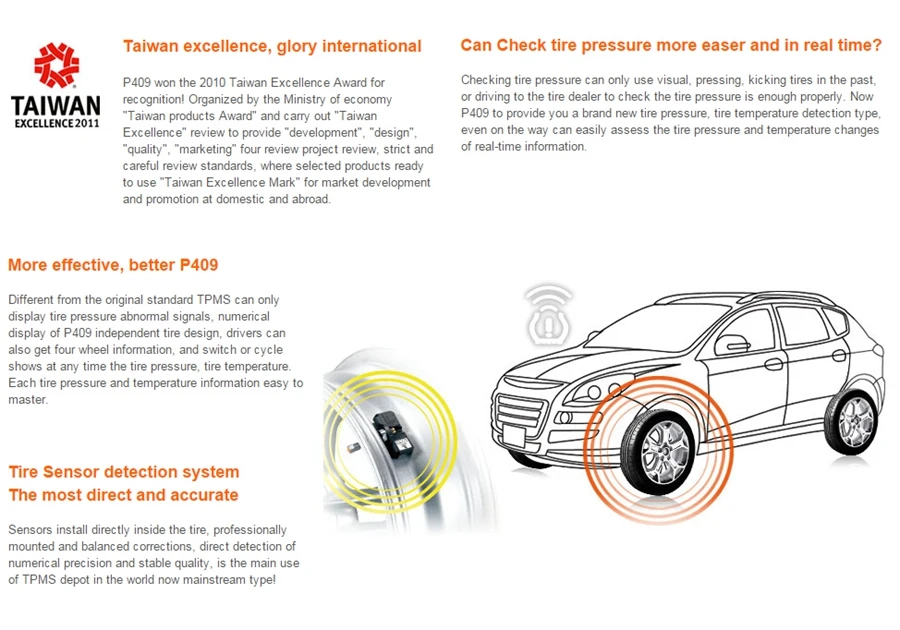 Even light racing cars create higher tire pressure on the inside when cornering, and trucks even more so. In addition, the presence of temperature compensation allows us to talk about the stable accuracy of pressure measurement, regardless of the air temperature in the tire in the range from -40 to +45°C.
Even light racing cars create higher tire pressure on the inside when cornering, and trucks even more so. In addition, the presence of temperature compensation allows us to talk about the stable accuracy of pressure measurement, regardless of the air temperature in the tire in the range from -40 to +45°C.
6. Is low tire pressure easy to spot?
The tire is under load and it is impossible to visually diagnose low pressure in it, therefore it is recommended to check each tire monthly with a pressure gauge. INCAR TPMS eliminates this procedure.
7. Why do tires lose pressure as they are used?
Many factors affect tire pressure, including changes in ambient temperature and tire damage (cuts, punctures). The pressure drops by about 0.12 atm. when the ambient temperature drops by 10°C. In addition, the wheels simply lose up to 0.1 atm. per month, since the air naturally escapes through the contact between tire and rim.
8. How much air should I put in my tires?
How much air should I put in my tires?
Always set the normal pressure in the control system to the same as recommended by the tire manufacturer for the accepted operating conditions (for example, at 25°C), and inflate the wheel in the same way. If you set the driver's display to 7 atm., And inflate the tire to 7.2 atm. "For good luck", this will only provoke a false alarm of the sensor.
9. Is it possible to cross the ford in a car with sensors installed on its wheels?
All sensors of the INCAR TPMS range are made completely waterproof, with IP67 protection. This means that they can be submerged to a depth of 3 m for 10 minutes. Therefore, the river ford will not damage the equipment. But you should be careful on the high pressure washer and avoid close direct impact on the high pressure jet sensor, so as not to damage the valve.
10. Can I set different pressures for each tire or axle?
Of course, different axles can be set to different pressures, for example for tractor and trailer, or for front and rear axles. There are no barriers to separate settings.
There are no barriers to separate settings.
11. What is considered a high tire temperature?
In general, a tire is at any temperature at which it operates safely. The operating range is always specified by the manufacturer. Excluding deep negative temperatures, which are not achieved in real life, consider the extreme case of wheel jamming and tire temperature rise from asphalt friction. Since the critical pressure deviation is set to 10%, in absolute numbers for a truck, this means approximately 1 atm. According to Charles's law, the air in the tire will be 100°C hotter than normal. This value is considered high - the driver will receive an alarm, although in practice it is quite safe to exceed 150 ° C.
12. Do I need a special tool to install the sensors?
No tool required for all external sensors.
13. What is the diameter of the sensors?
The diameter of the external pressure sensors is 24-29 mm depending on the model and the presence of the anti-removal cover.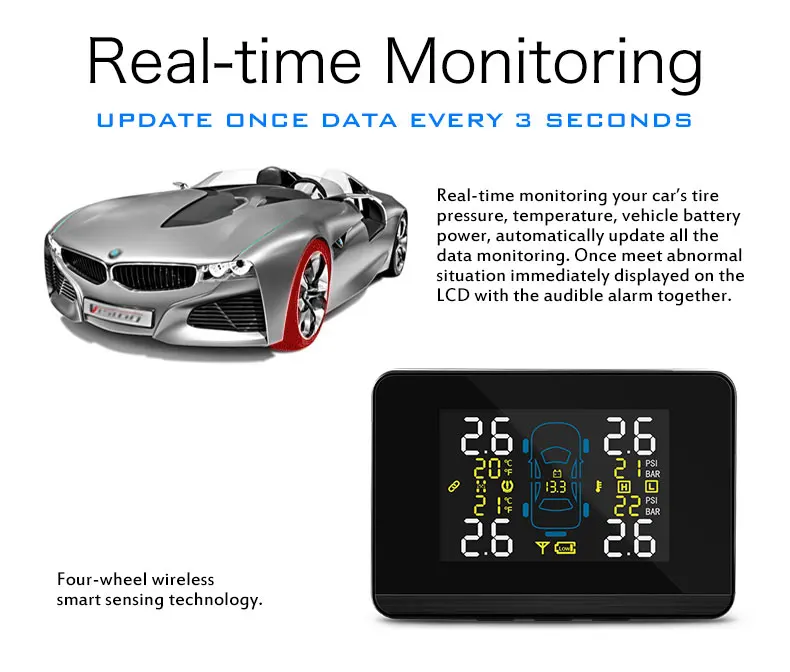
14. Is it easy to install the sensor on the inner rear wheels of the truck?
If you can access the valve stem, you're good. It may not hurt to install a steel valve extension - rubber is not recommended, as centrifugal force can cause the valve to fail at high freeway speeds.
15. Will the system monitor pressure in a spare tire that is not spinning?
There is no reason why the INCAR TPMS sensor will not work on the spare tire - no rotation is required for its operation, a slight vibration is enough.
16. If you temporarily remove the sensor to inflate the wheel, will you have to look for the sensor again using the driver display?
You don't have to reboot or work with the display, you just need to wait for it to update. As the display cycles through all the sensors, it will receive an update from any of them within minutes of the pressure control system being activated.
17. If I put pressure sensors on only part of the wheels, can I add the missing ones later?
If I put pressure sensors on only part of the wheels, can I add the missing ones later?
Yes, you can add more sensors to your system as needed. The total number of sensors recognized depends only on the driver display model.
18. Can different INCAR TPMS sensor models be used on the same truck?
Yes, of course, you can put any sensors of our system in any configuration on the vehicle, they will not conflict with each other and the system will work correctly.
19. Can I use tire valve extensions?
Most tire valve expanders work fine with INCAR TPMS, but be aware that adding an extra link to a working system only complicates it and may cause an incorrect alarm due to a loose connection of the extension to the sensor.
20. Will the sensors work with a stainless steel valve extension?
Yes, a valve extension is a common feature when installing a pressure monitoring system.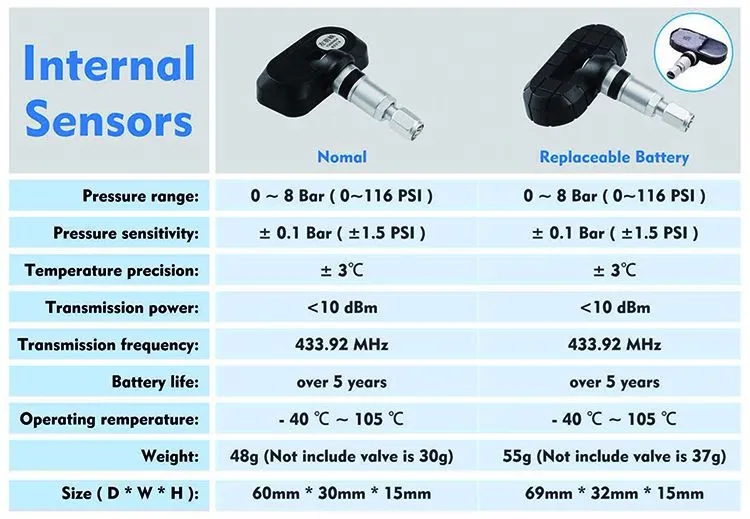 It is very important that all your add-ons are attached to the disc properly, and not just sticking out of the wheel as they should.
It is very important that all your add-ons are attached to the disc properly, and not just sticking out of the wheel as they should.
21. Can I use a rubber valve extension to mount the sensor?
In general, unless otherwise required, steel valve extensions are recommended. There are 2 types of extension: one goes through the rubber stem and clips on the edge of the rim, the other sticks to the rim and supports the rubber stem on the side. The main problem with rubber extensions is that they run through a metal rim. In case of unsuccessful installation and vibration, the rim may begin to fray the valve extension. There are many factors that can influence your decision whether or not to use a rubber extension sensor - we always recommend that you consult a specialist to determine on the spot what is best for your application.
22. Are the sensors firmly attached to the valve? Perhaps it is worth using additional means to secure them?
Practice has shown that external pressure sensors fit tightly on the valves and never get lost by themselves. Any attempts to stick them will lead to problematic removal of them in the future.
Any attempts to stick them will lead to problematic removal of them in the future.
23. Do I need to re-balance the wheels after mounting the sensors?
The heaviest sensor weighs less than 15 g and does not significantly affect wheel balance.
24. Do I have to enter special codes for each sensor when setting up?
Each sensor is programmed with its own unique code and the Driver Display automatically recognizes each sensor with this code when it is installed on the wheel.
25. I have 4 sensors on 2 different trailers, will the system automatically switch to the correct trailer after attaching it?
You will need to install a repeater on the front of each trailer. The repeater will store the data of "its" sensors and will transmit them to the driver's display as soon as it appears within its range.
26. How often do sensors report tire pressure and temperature, is this enough for safety?
Information on the driver display is updated every minute - these are the settings in the system, although even 5 minutes is enough for a proper level of safety according to statistics.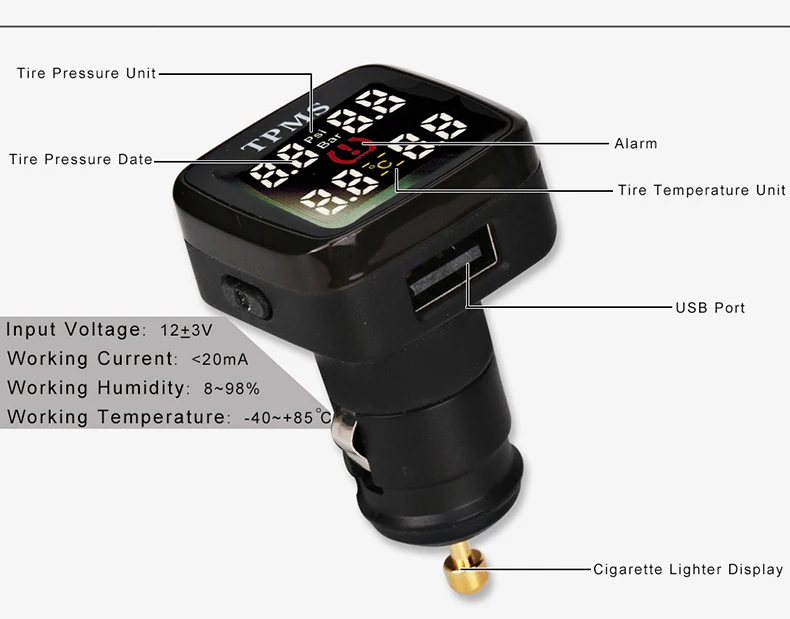 The sensors in the tires are independent and do not need to be synchronized. The program scrolls cyclically on the display the current information about the tires in which the sensors are installed, the standard time for displaying data from one sensor is 5 s.
The sensors in the tires are independent and do not need to be synchronized. The program scrolls cyclically on the display the current information about the tires in which the sensors are installed, the standard time for displaying data from one sensor is 5 s.
27. Will the INCAR TPMS system conflict with the factory-installed tire pressure monitoring system?
If your factory installed system is built with internal sensors (i.e. mounted on the wheel hub inside the tire), then there will be no problem. It doesn't always make sense to mount a second system, only if you want to be alerted to tire temperature violations or want to achieve more accurate tire pressure monitoring by taking into account temperature fluctuations. This issue requires separate consideration by a specialist.
28. Can I combine sensors from other manufacturers with INCAR TPMS?
It is not recommended to mix components from different systems. We cannot guarantee that they will work properly or even with each other.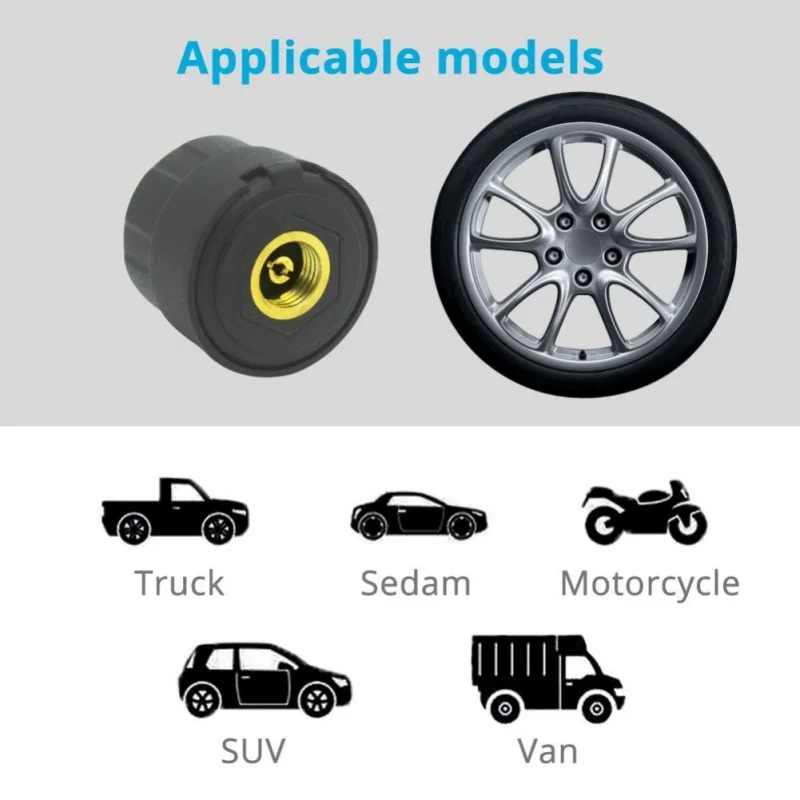
29. What is the distance of reliable signal transmission from the sensor to the display?
The TPMS signal transmission distance for long vehicles can be up to 15 m. But in each case, tests are required because the trailer or trawl can distort the signal from the sensor.
30. Will these devices affect the operation of a 2.4 MHz wireless camera?
No, the INCAR TPMS pressure monitoring system's communication frequency is different, your camera will function normally.
31. Will my phone's Bluetooth affect the blood pressure monitoring system in any way?
The Bluetooth device does not affect or interact with INCAR TPMS components in any way.
32. Will a GPS device such as a car navigator or other interfere with the driver's display and vice versa?
Any GPS device can be located close to the INCAR TPMS equipment, they do not affect each other in any way.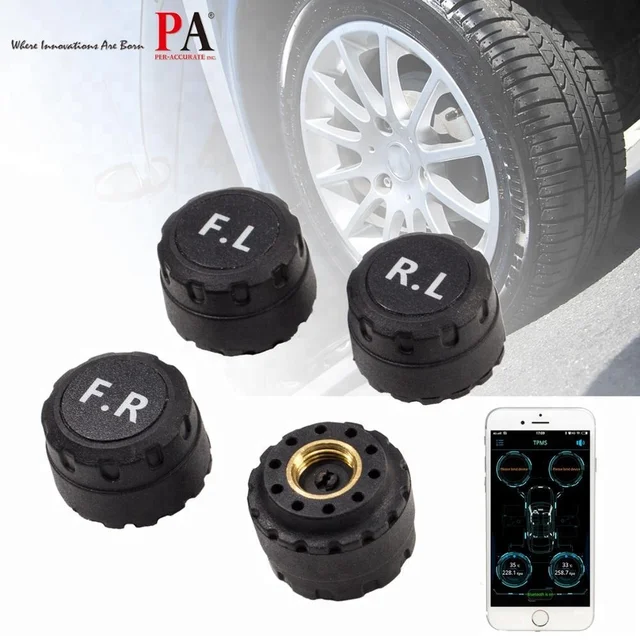
33. The valves are located in the middle of one of the holes in the rims. Can I use an anti-theft sensor?
Without seeing the wheel, it's hard to say - it all depends on the bore diameter. The TPS-1 anti-removal sensors have an internal diameter of 24 mm (without protective sheath) and an external diameter of 28 mm. Many prefer to use them without the anti-removable housing and simply screw the sensors onto the valve by hand. But the design of the key is such that it will easily fit into the hole in the rim, and most likely you will not have to sacrifice the safety of the equipment.
34. Will I receive an alarm before a tire explosion or other dangerous situation occurs?
Yes, when a tire begins to lose pressure or overheats and the pressure rises critically, you will receive a sharp audio-visual alarm on the driver display and a precise indication of the tire in danger. On a frosty morning, it is possible that the tire temperature is too low and the system sounds the alarm - but the tire just needs to warm up after starting to move.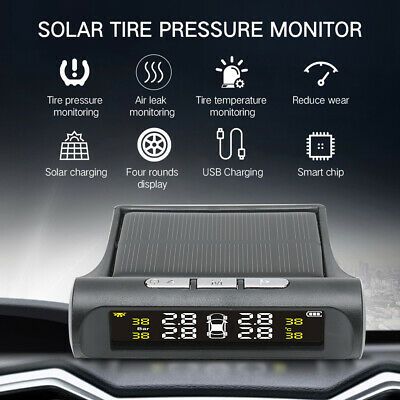
35. Will the INCAR TPMS monitor the tires in a parking lot with the engine off?
No, if the sensor is not vibrating and the driver display is off, the tire pressure is not monitored - unless it is out of range. But if the tire pressure or temperature changes suddenly while the car is parked, the sensor comes to life and sends an alarm to the driver's display. If it is turned on, you or the parking guard will receive a danger alert, if it is turned off, only after turning it on.
36. How much must the tire pressure change before the alarm sounds?
Some control systems fix the critical pressure deviation as a percentage of the standard and strictly prescribe it in the settings. In contrast, INCAR TPMS is designed so that you can decide when to be notified. For example, when driving a truck into a hot climate zone, you can change the critical temperature settings. At the beginning of operation, we recommend setting a signal for a pressure deviation of 10% of the standard value in any direction.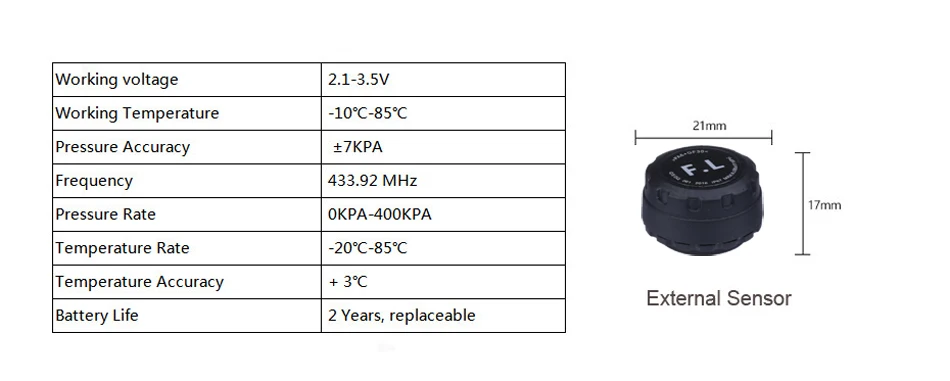
37. I don't want to remove the sensor every time to inflate the wheel, is there a solution that suits me?
There are two of them. First, you can install one of two types of internal sensor - TPS-22 or TPS-22. Secondly, we offer a manifold for external mounting, through which we can inflate the tire without removing the sensor. But you must be sure that this equipment will not attract intruders and they will not be able to steal it while the car is parked.
38. What is the typical battery life of sensors?
The INCAR TPMS uses high performance German IC boards that are designed to maximize sensor output power while maintaining battery life. The maximum service life of the non-replaceable battery of the internal sensor is 5 years, the external sensor is 2 years. But ultimately, the life of a CR1632 battery depends on its workmanship, ambient temperature, and vehicle usage. The colder the air, the shorter the battery life.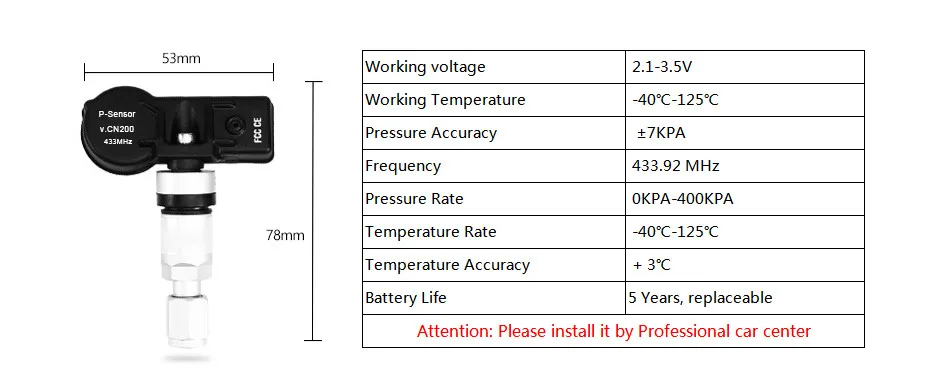 Replacement batteries for external sensors are not covered by the warranty.
Replacement batteries for external sensors are not covered by the warranty.
39. Will your system work on travel trailers?
Of course, the INCAR TPMS system works on all types of recreational vehicles, as well as trailers of any permitted length. But it may be necessary to use a transceiver to amplify the signal if the trailer is very bulky or technologically complex. Everything will be determined by the practice of operation. In any case, you will not immediately notice in the rear-view mirrors that something has happened to the trailer vehicle if you are driving a car, so the control system can save the life of people riding in a trailer.
40. Is it easy to remove the sensors if you plan to take a long break from the car?
External sensors are easy to remove. All external sensors do not require a tool. It will be more difficult with the internal ones - it will require re-beading the wheels and the corresponding dismantling work.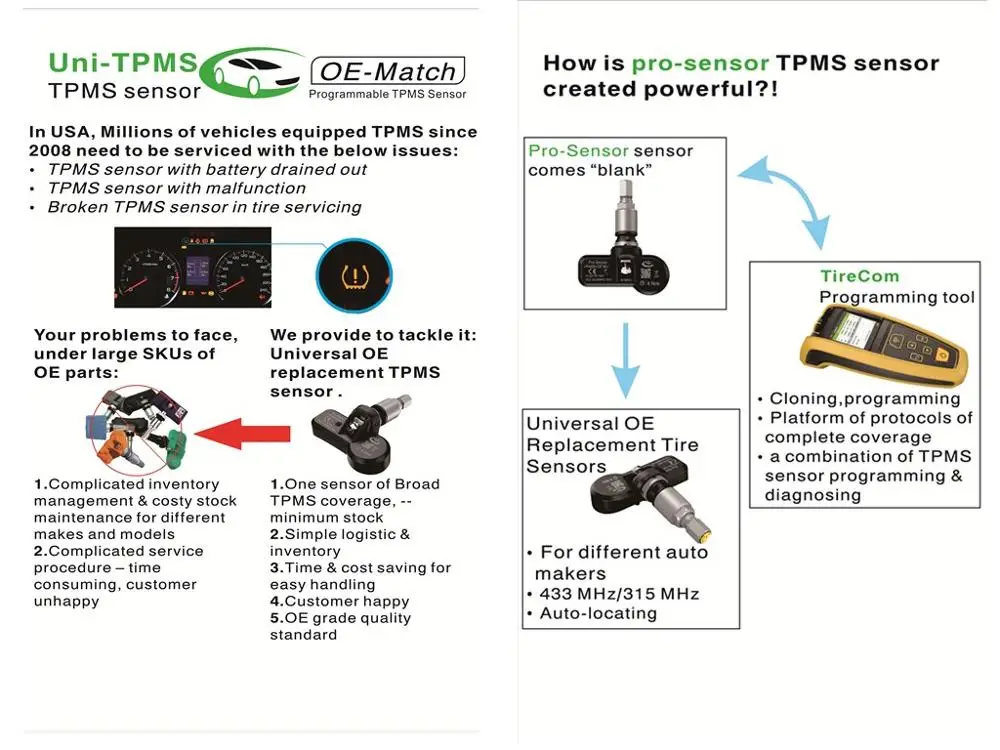
41. How is the driver's display mounted in the cab?
The self-tapping bracket can be considered the most reliable, but the delivery also includes a suction cup, which can come off at high glass temperatures or as a result of wear on the contact surface. Sometimes the driver's display is placed in special boxes (U-shaped supports) on double-sided tape, within reach, but this method of attachment is not provided in the delivery.
42. Can the driver's display be mounted flush on the dashboard?
The speaker of the display is located on its back surface, as well as the mating part of the mount, so the surface of the device is not completely flat and must be at least partially open. However, some users contrive to fix the display in such a way so as not to lose sound and the device is not at risk of falling. It should be noted that there is hardly anything more reliable than standard fastening methods.
43.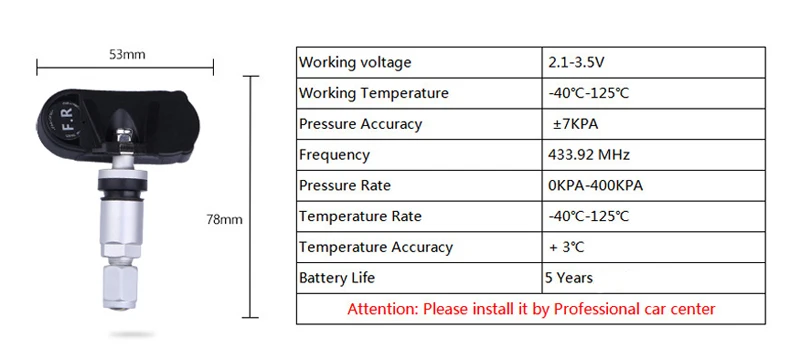 Does the driver display come with a charger?
Does the driver display come with a charger?
Either a 12-volt charging cable connected to the cigarette lighter or an RS232 cable for integration with various monitoring systems and at the same time powering the display is included. The capacity of the built-in lithium-ion battery is enough for several days of battery life.
44. Do I need a signal amplifier (transceiver)?
It used to be easy to determine if you needed a transceiver - if the vehicle is longer than 15 m, then you need it. Diesel engines these days have so many electronics that interference is possible. Also, the quality of the signal is affected by the structure of the frame and the amount of metal on different sides of the cab. In the general case, this question can only be answered based on the results of the practical operation of the system. You can try to work without a transceiver, but if the signal from the sensors is lost, you will need to connect the transceiver to the on-board 12 V network.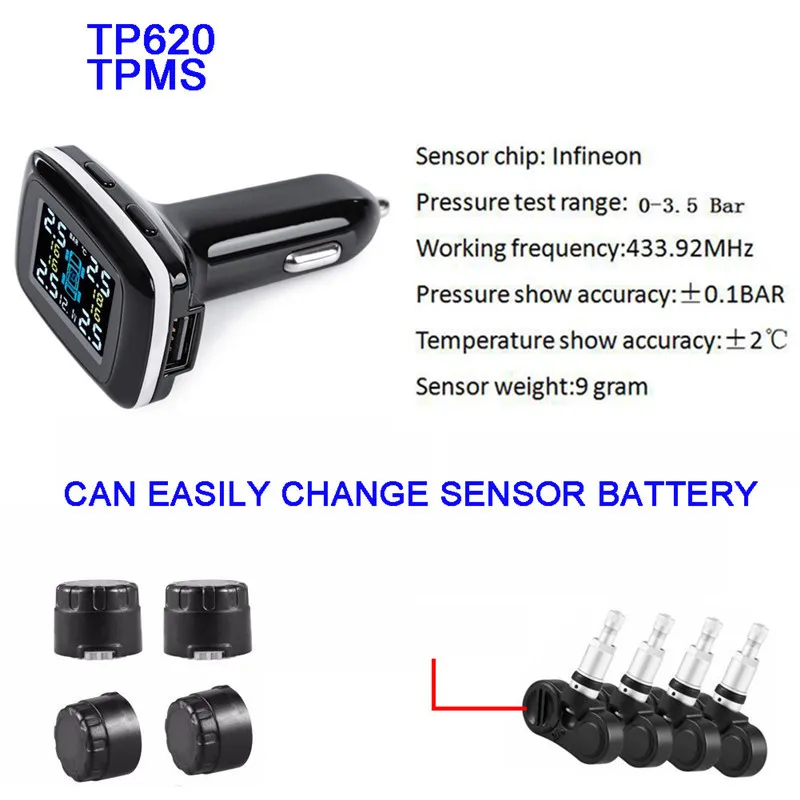
45. Is a second signal booster available?
Yes, we can provide an extra transceiver for extra long trailers if the user wants to be sure that the display reads information from all sensors.
gradual loss of tire pressure. In the event of a sudden change, such as a blowout or a puncture, this information can help avoid accidents. Monitoring gradual losses and slow leaks can help drivers extend the life of a set of tires by identifying problems that lead to increased wear.
The AllTPMS.ru online store offers tire pressure sensors from the world's best manufacturers in Europe and Asia. Guarantee for sensors 2 years, official dealers of manufacturing plants, so only the best prices. Tpms tire pressure monitoring system +tire buy
Contents
Today's aftermarket sensors are more efficient than the first generation sensors that came with factory equipment systems. Also, many factory systems will only activate a warning light to indicate a pressure problem. Most aftermarket systems will show you the actual pressure in each tire, which is more useful for finding slow leaks that can lead to premature tire wear.
Also, many factory systems will only activate a warning light to indicate a pressure problem. Most aftermarket systems will show you the actual pressure in each tire, which is more useful for finding slow leaks that can lead to premature tire wear.
Apart from the permanent installation of the display, no wires or mechanical devices are required. The sensors are located in the valve stem caps and the information is sent to the display wirelessly. If you have ever filled your tires with air through a gas station air pump, you can install these sensors.
Original equipment systems are accurate to within one psi or PSI. Aftermarket systems can be just as reliable, but user reviews indicate that accuracy can vary by make and model. Be sure to read user reviews before purchasing as even quality TPMS can vary.
Plant equipment TPMS batteries typically have a lifespan of five to 10 years.